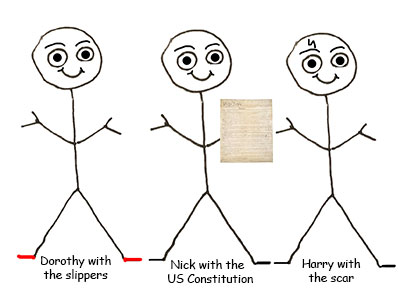
Writers have a plethora of reasons to refer to people by name in their work such as in salutations in letters; when describing people’s actions, research, or ideas; and in citing sources. For readability and clarity and out of respect for those referred to, it is important to be aware of how to use names grammatically and in accordance with proper style and social norms. In today’s post, I will review some common errors in using names and how to correct them.
In Academic Writing
I’ve actually heard Sigmund Freud referred to as “Sigmund” in a student’s paper. Academic writing is formal by nature, so referring to authors or researchers or to people in history or current events by first names is a no-no. Nicknames (Joe Green) are even worse. In some fields, it is common to refer to a person the first time in a paper by first and last name and subsequently by last name only. In other fields, it is more common to use the last name only throughout.
An exception to the first name rule would be in a participant study. If you have explained that for confidentiality or other reasons you will be referring to participants by first name, alias or not, that is fine. You can also include the first name on first and subsequent reference to someone if you will be referring to two people with the same last name and you need first names to distinguish them.
Get a free sample proofread and edit for your English document.
Two professional proofreaders will proofread and edit your English document.
Do not use a title the first or any other time you refer to someone. No matter how much respect you have for someone, it just sounds kind of silly to refer to people as Mrs. Jane Doe. There are a few exceptions, like Dr. Martin Luther King, Jr., where including a title has become commonplace, but in general, leave out titles.
In Correspondence
In salutations in emails and letters, err on the side of formality. Unless you are personally acquainted with someone, use the person’s title and last name. Do not write an email to your professor starting with “Hey, Bob,” unless you’re sure Bob is your friend.
Use a letter’s recipient’s name whenever possible. If you don’t know the name, make a phone call or check online to see if you can get a name or at least a job title such as “Director of Marketing” and avoid “To Whom It May Concern”-type salutations.
Note that if you must use such salutations, they are capitalized as forms of address.
In Fiction
Readers can be confused about character names when you refer to individual characters too many different ways. You might have a character named Sue Smith who gets called Mom by her kids, Mrs. Smith by a bank teller, and Sue by her friend, but try not to get too complicated. Once you name characters, call them by their names from that point forward. Sure, Sue Smith might be sultry stranger to someone else in the book, but if you drop her name and refer to her as a “sultry stranger” after naming her, it may be confusing.
If your book or story has a lot of characters, keep in mind readers may struggle to keep people straight if you give too many names at once. Release the information as gradually as you can logically do while preserving flow, and drop hints to help readers know who you are talking about. After readers know Sue, if you have introduced many others in surrounding parts of the text, when you refer to her again, include something in the sentence to help readers recollect who she is.

Example: Sue tossed her flowing locks over her shoulder and flirtatiously said, “Oh, I like roller coasters.”
If readers already know about Sue’s flowing locks or flirtatiousness, this information will help them recall who she is.
More Common Naming Problems
Be aware of cultural norms. In some languages, names are commonly written last name, first name (though in some languages this is going out of style). So if you are going to refer to someone by their last name, make sure you are using their actual last name. An example would be from Chinese: In the name Liu Shinfang, Liu is the last name. When in any doubt, check to be sure you have the order of names straight.
Use consistent transliterations. With languages that do not use the Latin alphabet, names of people and places are transliterated. Errors can be introduced in transliteration, and in some cases there are different standards of transliteration for a single language. So make sure the name is transliterated correctly, and if it can be transliterated multiple ways (e.g., Trotskii and Trotsky), pick one style of transliteration and use it consistently.
Don’t flip-flop with abbreviations. You might want to refer to the World Health Organization as the WHO. If so, provide the initialism in parentheses following the written-out name the first time you mention the organization, and then use the initialism each time thereafter.
Example: The World Health Organization (WHO) is an important resource of information about infectious diseases. Data from the WHO show you should get vaccinated.
Being consistent and appropriately formal will help your writing be clearer and more credible. A rose by any other name might smell as sweet, but if you are writing about Rose, just call her that every time!
Sarah P.
Get a free sample proofread and edit for your English document.
Two professional proofreaders will proofread and edit your English document.
Get a free sample proofread and edit for your document.
Two professional proofreaders will proofread and edit your document.
We will get your free sample back in three to six hours!